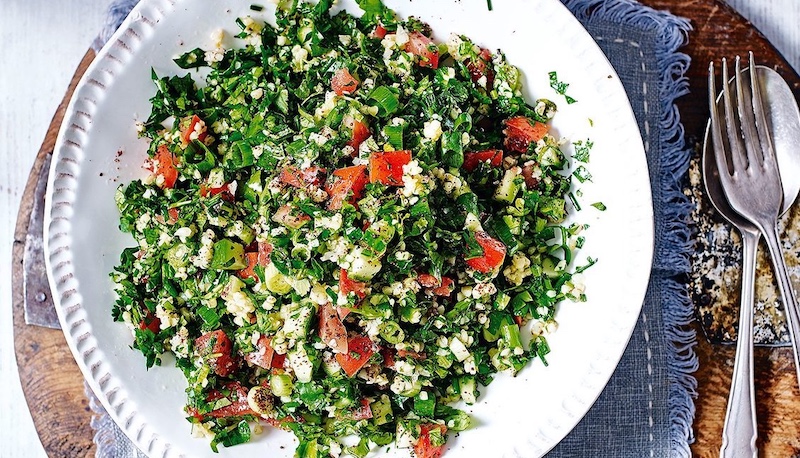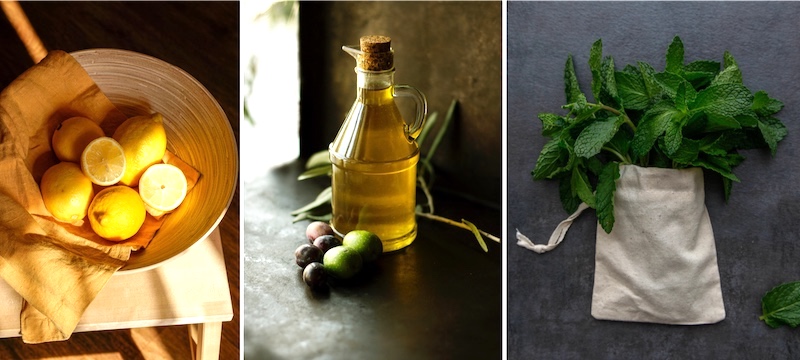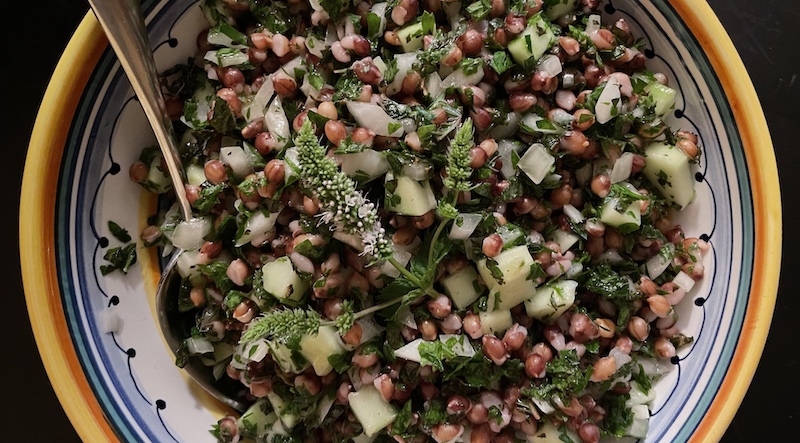
Spring Salad: Barley, Asparagus and Mint Tabbouli
Points have been deducted from my lifetime hosting score because of my penchant for trying out new recipes on guests. Fortunately very few of them have been complete disasters, and with enough wine and a smashing dessert—the old saying about ending on a high note is worth hewing to—how could anyone complain?
The other night was a prime example. Dave had marinated a whole bone-in pork leg in a pernil-style rub, then smoked it for six hours, rendering it lusciously juicy and with an enviable red smoke ring just inside the crust. I'd gone to the farmers' market for spring lettuces for a salad dressed with my new favorite vinaigrette, and picked up asparagus because, well, duh, it's asparagus season and who can resist?

Our guests for that evening were on a low-carb, low-salt regime so a "starch"—I've written before about the "meat, starch, vegetable" rubric that's imbedded in my middle-class, WASP-ish DNA—needed to be something other than the usual risotto or pasta or potatoes.
Fortunately I remembered there was a pound of barley I'd stashed in the freezer, so a grain salad seemed like a healthy solution. Parsley and mint were threatening to take over the garden, and darn it if that asparagus might come in handy, too.
Oh, and did I mention that Dave had made a raspberry sorbet for dessert? High note hit!
Barley, Asparagus and Mint Tabbouli
For the vinaigrette:
1/2 c. olive oil
6 Tbsp. lemon juice
1 Tbsp. Dijon mustard
1 clove garlic, crushed
1/2 tsp. dried oregano
Salt and pepper to taste
For the salad:
2-3 c. cooked barley, either hulled or whole grain
1 c. coarsely chopped fresh mint leaves
1 c. coarsely chopped fresh Italian parsley
1/2 c. finely sliced spring onions, red onion, or sweet onion
1/2 to 1 lb. asparagus, cut into 1" long pieces and lightly steamed
Salt to taste
If using unhulled barley, soak overnight prior to cooking.
Put 8 oz. uncooked barley in the bottom of a large saucepan and cover with 2-3" of water. Bring to a boil, reduce heat to simmer and cook, adding water if it gets too dry, until the barley is cooked through but still has a nice resistance when you bite into it…don't let it get mushy. (Unhulled barley will take longer than hulled barley.) Drain and rinse in cold water to cool. Transfer 2 to 3 cups, depending on how much grain you like in your tabbouli—I like less grain, more herbs—to a large mixing bowl, add remaining ingredients and enough dressing to moisten. Combine and, if time allows, let it sit for an hour or so for flavors to meld. Serve at room temperature.
While the barley cooks, make the vinaigrette. Take any tightly lidded pint container—I often use a jam jar—put all the ingredients into it, screw on the lid and shake like the dickens over the sink in case, as once happened, the lid didn't seal as tight as I thought and I ended up dressing the kitchen instead of the salad. It can be made ahead and stores well for several days in the fridge.
Check out these six salad recipes that will keep you inspired all summer long!



